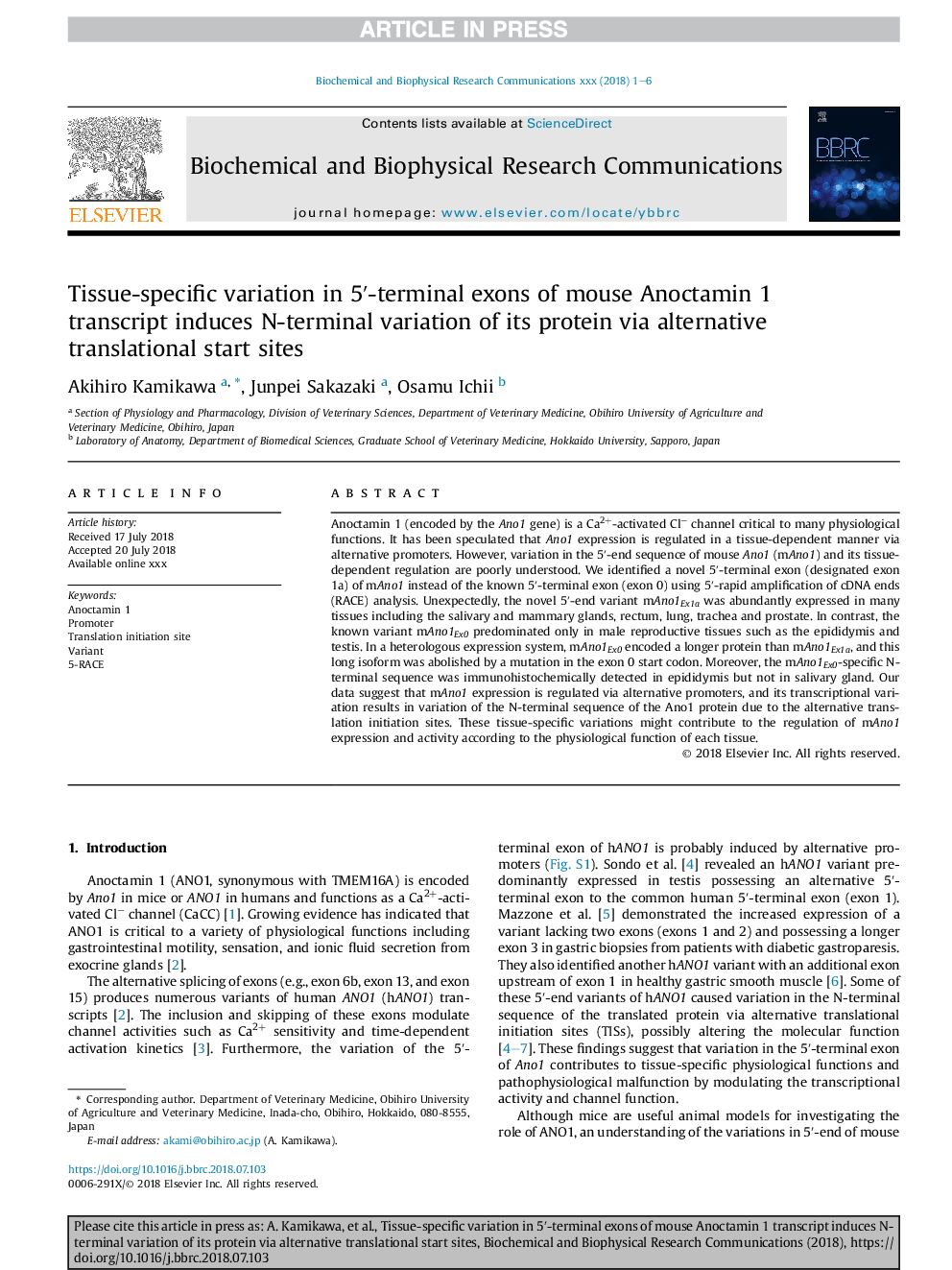| Article ID | Journal | Published Year | Pages | File Type |
|---|---|---|---|---|
| 8956015 | Biochemical and Biophysical Research Communications | 2018 | 6 Pages |
Abstract
Anoctamin 1 (encoded by the Ano1 gene) is a Ca2+-activated Clâ channel critical to many physiological functions. It has been speculated that Ano1 expression is regulated in a tissue-dependent manner via alternative promoters. However, variation in the 5ʹ-end sequence of mouse Ano1 (mAno1) and its tissue-dependent regulation are poorly understood. We identified a novel 5ʹ-terminal exon (designated exon 1a) of mAno1 instead of the known 5ʹ-terminal exon (exon 0) using 5ʹ-rapid amplification of cDNA ends (RACE) analysis. Unexpectedly, the novel 5ʹ-end variant mAno1Ex1a was abundantly expressed in many tissues including the salivary and mammary glands, rectum, lung, trachea and prostate. In contrast, the known variant mAno1Ex0 predominated only in male reproductive tissues such as the epididymis and testis. In a heterologous expression system, mAno1Ex0 encoded a longer protein than mAno1Ex1a, and this long isoform was abolished by a mutation in the exon 0 start codon. Moreover, the mAno1Ex0-specific N-terminal sequence was immunohistochemically detected in epididymis but not in salivary gland. Our data suggest that mAno1 expression is regulated via alternative promoters, and its transcriptional variation results in variation of the N-terminal sequence of the Ano1 protein due to the alternative translation initiation sites. These tissue-specific variations might contribute to the regulation of mAno1 expression and activity according to the physiological function of each tissue.
Related Topics
Life Sciences
Biochemistry, Genetics and Molecular Biology
Biochemistry
Authors
Akihiro Kamikawa, Junpei Sakazaki, Osamu Ichii,
